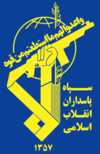This article needs additional citations for verification .(January 2017) |
 | |
| Class overview | |
|---|---|
| Name | Tir II (IPS 18) |
| Operators | |
| General characteristics | |
| Type | Torpedo Boat |
| Displacement | 26t standard, 28 ¼ t full |
| Length | 69 ft 4 in (21.13 m) x 18 ft 10 in (5.74 m) x 6 ft 9 in (2.06 m) |
| Beam | 18 ft 10 in (5.74 m) |
| Height | 6 ft 9 in (2.06 m) |
| Installed power | 3 1200hp diesels (type unknown), 3 DIO waterjets |
| Propulsion | 2 shafts |
| Speed | 52 kn |
| Range | 450 nmi (830 km) @ 25 knots |
| Complement | 6 |
| Sensors and processing systems | I-band navigation radar |
| Armament |
|
The Tir II (IPS 18) is an Iranian built small fast attack craft torpedo boat featuring a low, flush hull to reduce its radar cross-section. The radar is set on a retractable mast, with fixed 21" tubes inside the superstructure. Engines exhaust at the waterline to reduce its IR signature. Built by Iranian Maritime Industries (a subsidiary of the state-owned DIO company), the Bavar-class missile-armed boats are being acquired to replace the Tir-IIs. [1]
Ten units are in service, believed to be manned by the IRGCN, not the regular Iranian navy. In late 2006/early 2007 six of the sixteen vessels built were transferred to the Syrian Navy.
